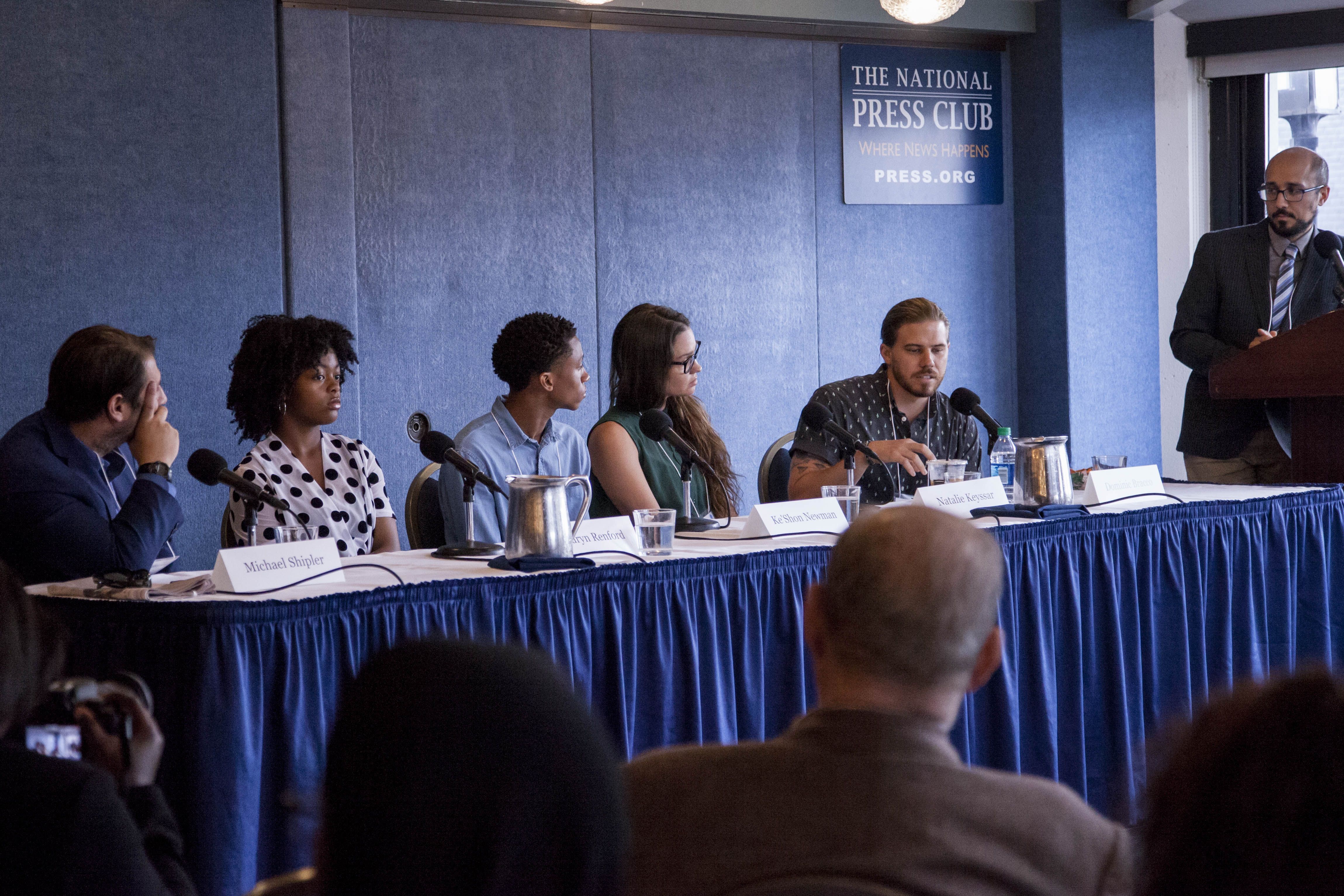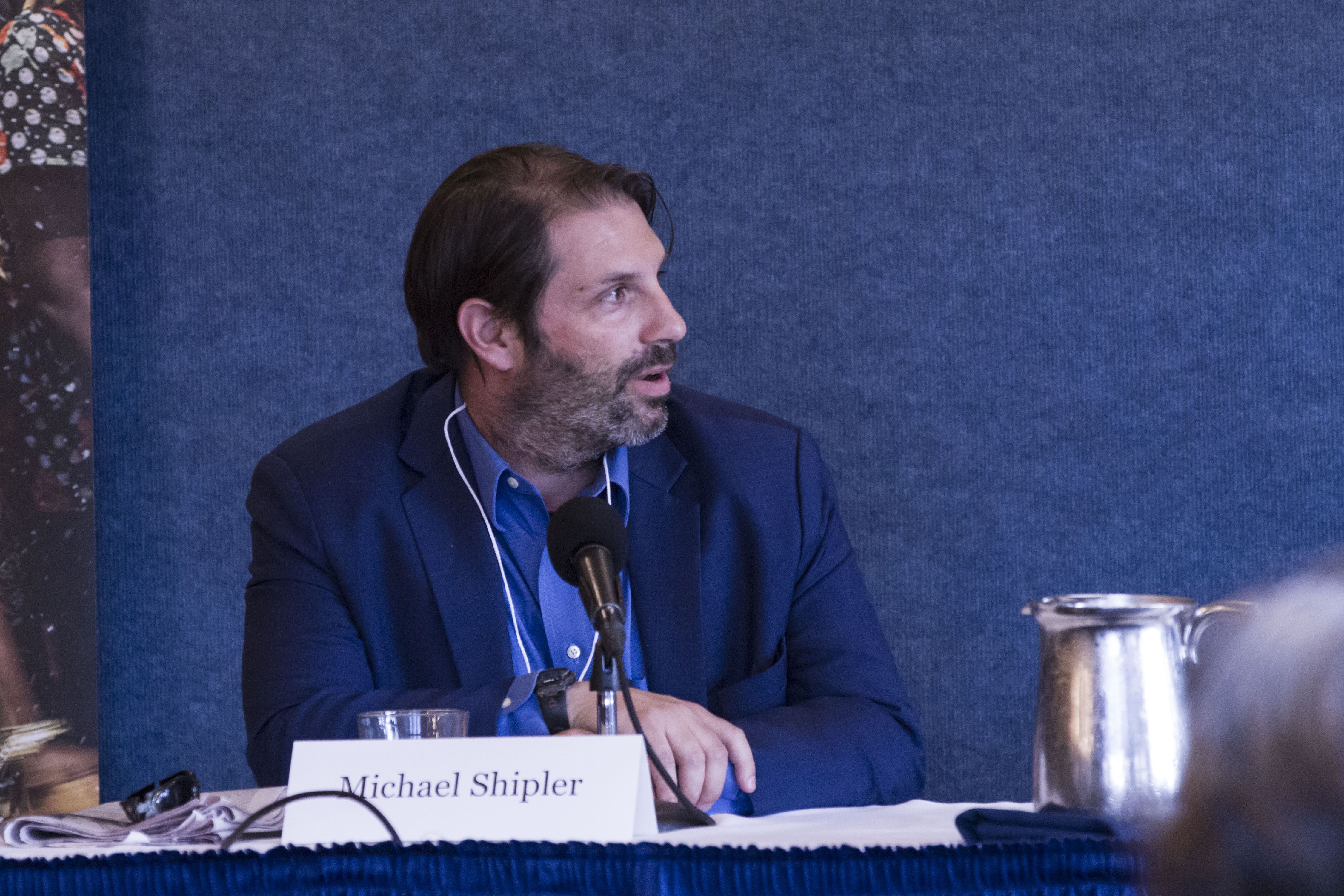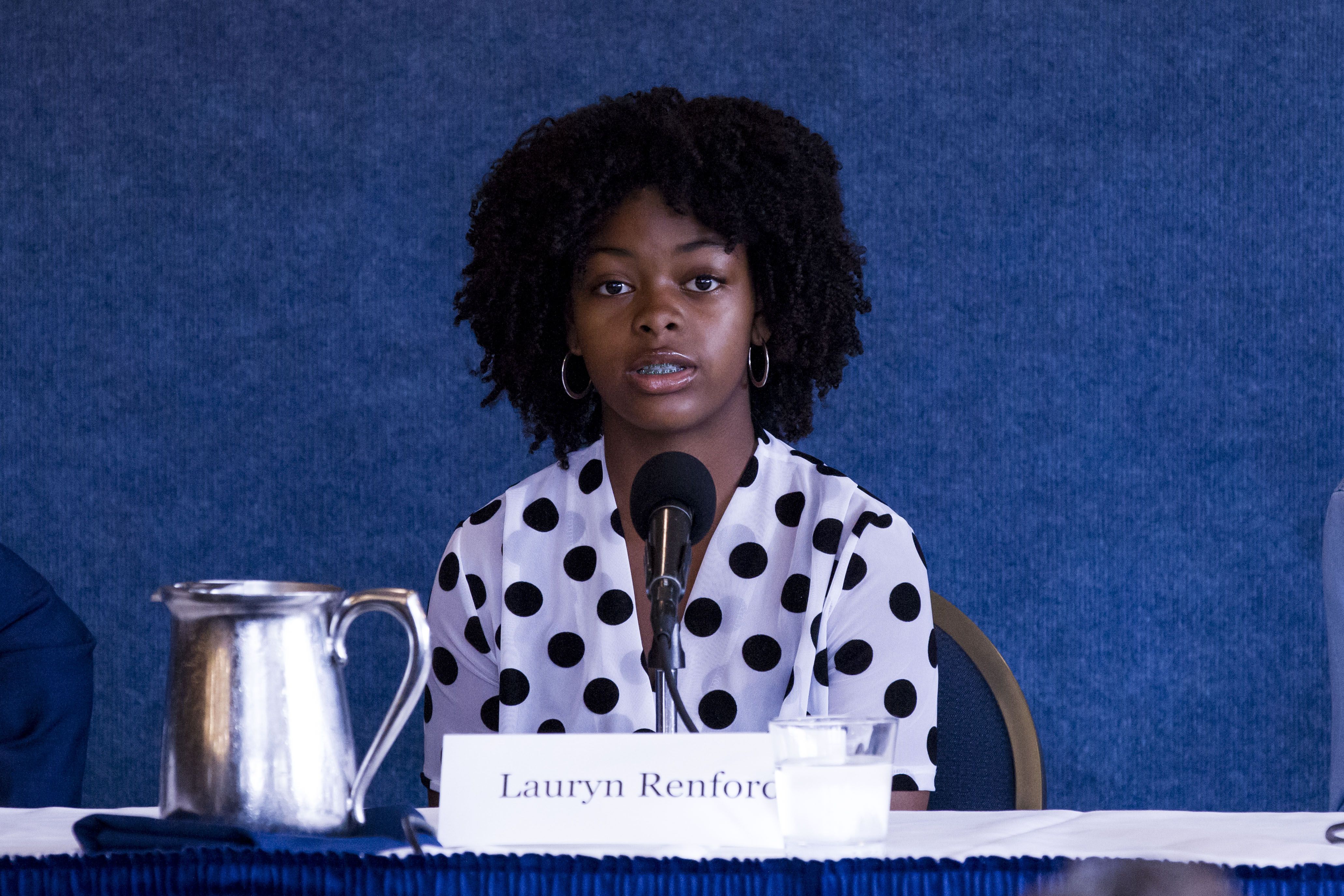Before a deep discussion of peacebuilding during the first day of the Beyond War conference on June 2, 2018, one of the winners of the Pulitzer Center’s 2018 Fighting Words Poetry Contest recited her poem “When It’s Gone.”
Isabel Brosseau Gray, a 7th grader from French Broad River Academy for Girls in North Carolina, magnified the silenced voices of many Venezuelan youth who are suffering from starvation due to oppressive government conditions. Gray’s poem pulled lines from Pulitzer Center reporting on the scarcity of food and medicine in Venezuela.
Following the poem recitation, Pulitzer Center senior education manager Fareed Mostoufi led the discussion for the "Youth in Peacebuilding–Globally and in the U.S." panel focused on the fundamental role youth play in bringing peace to communities. Panelists included Pulitzer Center grantees and documentary photographers Dominic Bracco II and Natalie Keyssar, youth peacebuilders Lauryn Renford of Washington, D.C., and Ke’Shon Newman of Chicago, and Michael Shipler, Asia regional director for the Search for Common Ground.
They connected over similar experiences and actions taken to facilitate peacebuilding, and they asked each other questions to learn about their respective perspectives covering violence and inciting peace through organizing and reporting.
“Youth have a critical role to play in building peace. And while youth are so often portrayed in the media and policy circles as a threat, we have always understood that youth leaders voices are critical to transforming the way that conflict is managed in any society, including ours here,” said Shipler.
Keyssar further emphasized the notion of the youth being seen as the enemy. Throughout her work covering youth culture and the personal effects of political turmoil and violence in the U.S. and Latin America she has seen the wide misunderstanding and dismissal of the youth as stakeholders in promoting peace across the world.
“The youth brings information, there is a breakdown of communication of what are the obstacles that are preventing peace. Dismissed as naive and unrealistic. We can learn from their innocence and hope,” said Keyssar.
The media doesn’t even use a person’s name. The dehumanizes them. That is a problem. @lauvnicole @pulitzercenter #BeyondWar pic.twitter.com/zh7Tg1AqCg
— Karen Lee (@theleewayat_TMA) June 2, 2018
Bracco recalled the patterns he’s seen in Mexico City as a documentary photographer with gun violence and the youth being pulled into gun violence.
“On a macro level, the younger folks were being used like pawns and brought into the issue of gun violence,” said Bracco.
Youth activists Renford and Newman highlighted their community organizing efforts to combat the stigmas associated with youth-led movements and their response to violence with peacebuilding.
After losing his stepbrother to gun violence, Newman became highly involved in his community and the national conversation regarding gun violence and creating a safe environment for the youth.
“They’re the new generation, they will be running America after awhile. If we can start with them, we can change the future. If we can teach them the right way, the peaceful way of life then we can see a change happening,” said Newman.
Renford is currently planning a mural for those slain in the District of Columbia. Her work with peacebuilding has been working to understand the psychological reasonings behind gun violence.
Collectively, the panelists highlighted how youth being involved in addressing conflict through peacebuilding is etched in our history and will continue to be in the fight for social change.
“There is nothing new about youth rising up and imparting change,” said Shipler.
The youth have always been in the forefront of major civil rights movements and political change, it’s imperative that we continue to include them in all ways possible #beyondwar @pulitzercenter @PHLschools @PHLschools pic.twitter.com/XtHQicUvDi
— Michael J. Rahming (@gosuityourself) June 2, 2018


